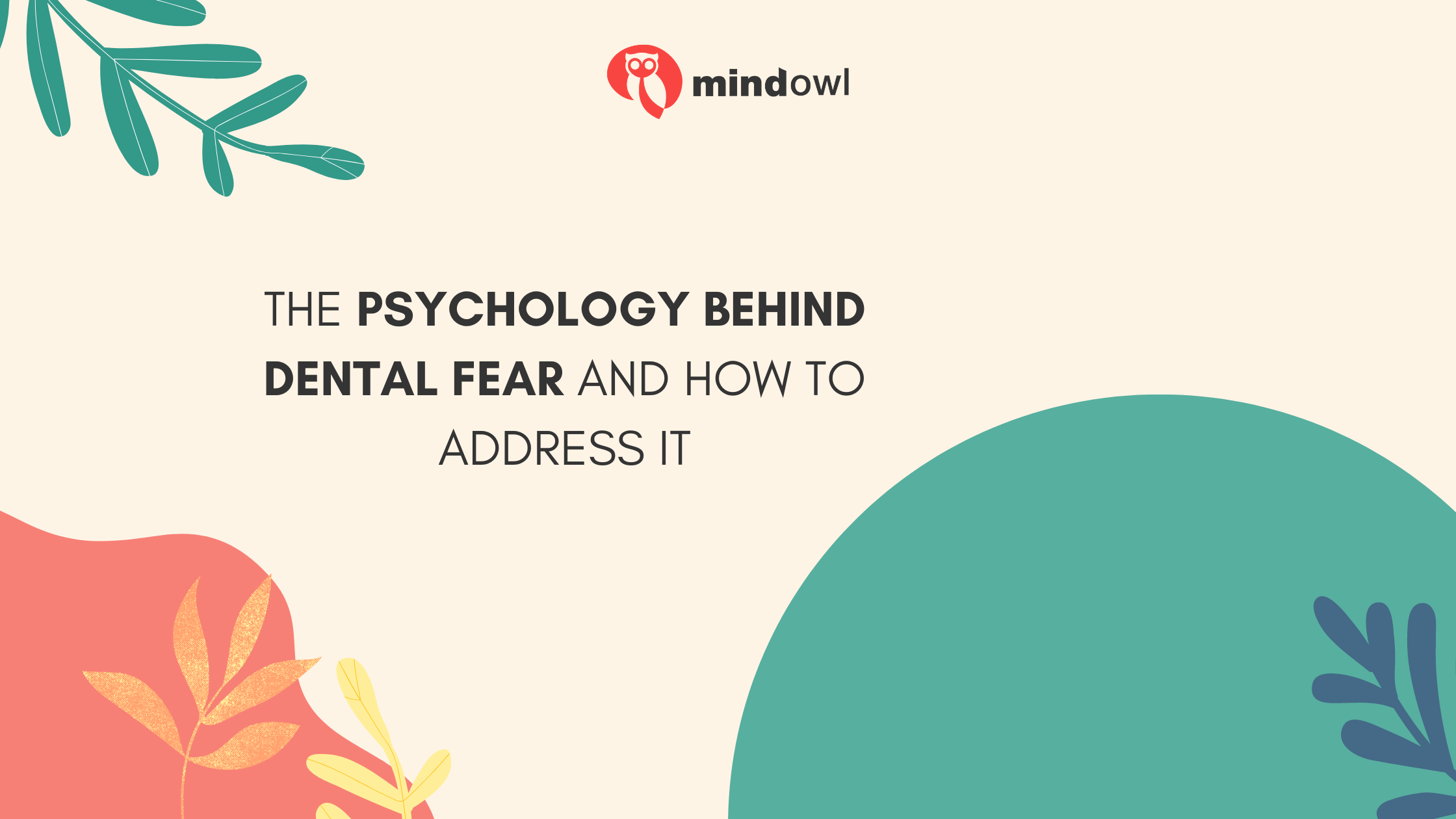Key Takeaways
- Dental fear is common and has various psychological triggers. Recognizing these triggers is the first step toward addressing your anxiety.
- Dentists play a vital role in alleviating fear. Open communication and a calming environment can make a huge difference.
- You have the power to manage your dental anxiety. Practical coping mechanisms and professional support can help you overcome your fear.
A lot of people are really scared of going to the dentist, and it can be a pretty big deal. This fear keeps them from getting the dental care they need, which can mess up their teeth and overall health. Understanding the psychological factors underlying dental fear is crucial for both dental professionals and patients alike. If we dig into why people are so anxious about dental visits, we can come up with ways to help them feel better and take good care of their teeth.

Psychological Triggers of Dental Fear
Several key psychological factors can trigger or exacerbate dental fear. Some big ones are worrying about pain, freaking out over needles or dental tools, and just the whole vibe of the dental office. The fear of pain, whether real or perceived, can be a significant barrier for many individuals. This fear may stem from personal experiences or stories shared by others.
The sight of needles or dental instruments can also evoke strong emotional responses, particularly for those with a pre-existing fear of injections or medical procedures. Many people find that the dental environment, with its unique sounds, smells, and overall ambiance, exacerbates their anxiety.
Past traumatic experiences, such as a painful or unpleasant dental procedure in childhood, can also contribute to the development of dental fear. These negative memories often become deeply ingrained in an individual’s mind, leading to avoidance behaviors and increased anxiety in dental settings. Moreover, even observing a loved one’s traumatic dental experience can instill a lasting sense of fear.
Understanding these psychological triggers is a critical step in developing personalized strategies to address dental fear.
The Dentist’s Role in Alleviating Fear
Dentists are crucial in alleviating dental fear and ensuring a positive experience for their patients. By adopting targeted strategies, they can establish a welcoming and fear-free environment that promotes trust and open communication.
Creating a Fear-Free Environment
A calming atmosphere in the dental office can significantly reduce anxiety. This can be achieved through soothing music, comfortable seating, and warm, inviting decor. According to my dentist, providing distractions, such as televisions or headphones playing calming nature sounds during procedures, can also effectively divert attention away from the dental work.
Open communication is paramount. Dentists should take the time to explain procedures in detail, using simple, non-technical language. This approach helps patients understand what to expect and reduces uncertainty, a key factor in fear. Encouraging patients to ask questions and addressing their concerns openly can further ease anxiety and build trust.
Building Trust and Communication
Establishing a strong rapport with patients is vital. Taking a few minutes to engage in friendly conversation before a procedure can help put patients at ease. Showing empathy and acknowledging their fears can also go a long way in building trust.
Giving patients options for pain relief, like local anesthesia or sedation, can be really comforting for those who are super sensitive. Moreover, offering patients a sense of control, such as allowing them to signal for a break during a procedure, can empower them and reduce feelings of helplessness.
By actively implementing these strategies, dentists can transform the dental experience from one of dread to one of comfort and trust. This not only benefits patients in the short term by reducing anxiety during procedures but also encourages regular dental visits, leading to better oral health outcomes in the long run.
The Role of Media and Cultural Influences
Media and cultural influences play a subtle yet significant role in shaping our perceptions of dentistry, often contributing to dental fear and anxiety. The portrayal of dentists and dental procedures in movies, television shows, and even cartoons can perpetuate negative stereotypes and create unrealistic expectations. Depictions of exaggerated pain, invasive procedures, and menacing dentists can instill fear in viewers, especially children, who may internalize these images and develop a lasting aversion to dental care.
Cultural attitudes toward dental health also play a role. In some cultures, dental visits are not prioritized or are associated with shame and stigma. This can lead to neglect of oral hygiene and avoidance of dental care, further reinforcing negative associations with dentistry. Additionally, societal norms and expectations regarding appearance and oral health can create pressure and anxiety for individuals who feel they do not meet these standards.
Understanding the impact of media and cultural influences on dental fear is essential for both patients and dental professionals. By recognizing these factors, we can work together to challenge negative stereotypes, promote positive oral health messages, and foster a more constructive and supportive environment for dental care.
Demographic Variations in Dental Fear
Dental fear is not a one-size-fits-all phenomenon. It varies across different demographic groups, particularly in terms of age and gender. Understanding these variations can help dental professionals tailor their approaches to address the unique needs and concerns of their patients.
Age-Related Differences
Research suggests that dental fear tends to be more prevalent in younger individuals, particularly children and adolescents. This may be attributed to a lack of experience with dental procedures, heightened sensitivity to pain, and a greater susceptibility to anxiety. As individuals age and gain more experience with dental care, their fear may gradually diminish.
However, dental fear can also persist or even intensify in older adults. This can be due to concerns about declining oral health, increased vulnerability to pain, and potential anxiety about the cost of dental treatment. Additionally, certain medical conditions that become more common with age, such as dementia or Alzheimer’s disease, can further complicate dental care and contribute to anxiety.
Gender Differences
Studies have consistently shown that women report higher levels of dental fear than men. This difference may be attributed to a variety of factors, including biological differences in pain perception, social conditioning, and cultural expectations. Women may be more likely to express their fears and anxieties openly, while men may be more inclined to suppress their emotions.
Understanding these gender differences can help dental professionals create a more supportive and empathetic environment for their female patients. This may involve addressing specific concerns related to pain management, offering additional reassurance and support, and creating a space where women feel comfortable expressing their fears without judgment.
By recognizing the demographic variations in dental fear, we can move toward a more personalized and effective approach to dental care. This involves tailoring treatment plans, communication strategies, and support systems to meet the unique needs of each patient, regardless of their age or gender.

Physiological Responses to Dental Fear
Dental fear isn’t just a feeling—it triggers real, physical responses in our bodies. Have you ever noticed your heart pounding, palms sweating, or breath quickening as you sit in the dental chair? These are common physiological reactions to dental fear, and they’re all part of our body’s natural ‘fight-or-flight’ response.
When we perceive a threat, our bodies release stress hormones like adrenaline and cortisol, preparing us to either confront the danger (fight) or escape it (flight). In a dental setting, this response can manifest in a variety of ways:
- Increased heart rate and blood pressure: This is your body pumping more blood to your muscles, preparing you for action.
- Rapid breathing: This helps deliver more oxygen to your muscles and brain, further fueling the fight-or-flight response.
- Sweating: This helps regulate your body temperature as your metabolism increases.
- Muscle tension: Your muscles tense up, ready to spring into action.
- Dry mouth: This is due to a decrease in saliva production as your body focuses its resources elsewhere.
- Nausea or upset stomach: This can be caused by the stress hormones affecting your digestive system.
These physiological responses are perfectly normal, but they can be quite uncomfortable and even debilitating. Recognizing them as part of your body’s natural stress response is the first step toward managing them. Simple relaxation techniques like deep breathing or mindfulness exercises can help calm your nervous system and reduce these physical symptoms. If your fear is severe, talking to your dentist about sedation options may be helpful.
Coping Mechanisms for Patients
Don’t let dental fear hold you back from achieving a healthy, confident smile. There are practical steps you can take to manage your anxiety and regain control of your dental experience.
Before Your Visit
- Talk to Your Dentist: Open communication is key. Share your fears and concerns with your dentist so they can tailor the experience to your needs.
- Learn About Your Procedure: Knowledge is power. Understanding what to expect can reduce anxiety and make the unknown less intimidating.
- Practice Relaxation Techniques: Deep breathing, meditation, or progressive muscle relaxation can help calm your nerves before your appointment.
- Distraction Techniques: Bring headphones with soothing music or a comforting podcast to listen to during your visit.
During Your Visit
- Agree on a Signal: Establish a hand signal with your dentist to indicate when you need a break or if you’re feeling uncomfortable.
- Focus on Your Breathing: Slow, deep breaths can help reduce your heart rate and calm your nervous system.
- Visualize a Peaceful Scene: Close your eyes and imagine yourself in a relaxing environment, such as a beach or a peaceful forest.
When Anxiety Persists
If self-help techniques aren’t enough, consider seeking professional help. A therapist specializing in anxiety or phobias can teach you coping mechanisms and help you address the root cause of your dental fear. Cognitive-behavioral therapy (CBT) has been shown to be particularly effective in managing dental anxiety.
Embracing a Fearless Smile
Overcoming dental fear is a journey, and it’s one you don’t have to take alone. With a deeper understanding of the psychological factors at play, the support of compassionate dental professionals, and a toolbox of coping mechanisms, you can conquer your anxieties and embrace a lifetime of healthy smiles. Remember, your oral health is an investment in your overall well-being, and a fearless smile is a priceless reward.
MindOwl Founder – My own struggles in life have led me to this path of understanding the human condition. I graduated with a bachelor’s degree in philosophy before completing a master’s degree in psychology at Regent’s University London. I then completed a postgraduate diploma in philosophical counselling before being trained in ACT (Acceptance and commitment therapy).
I’ve spent the last eight years studying the encounter of meditative practices with modern psychology.


